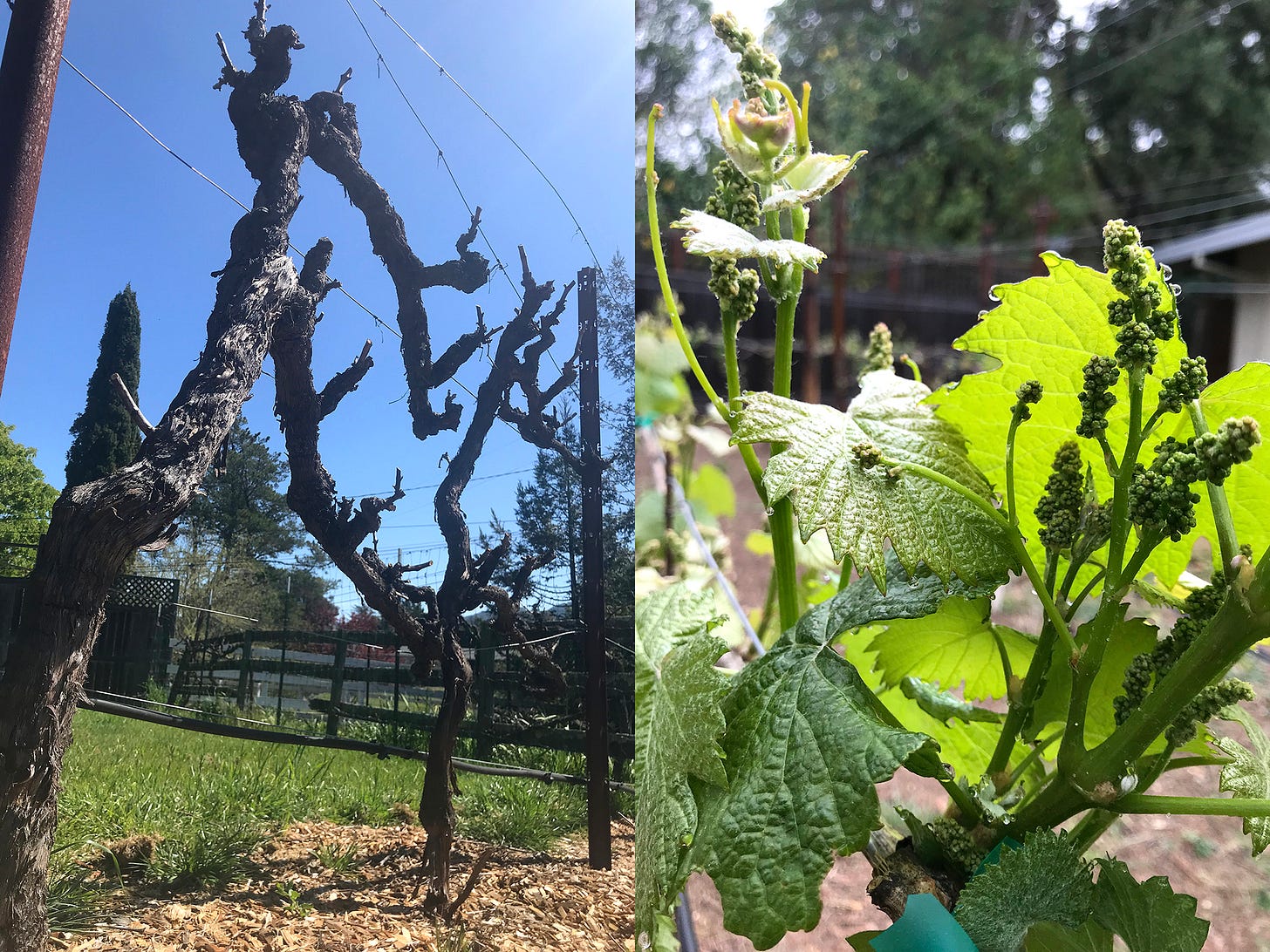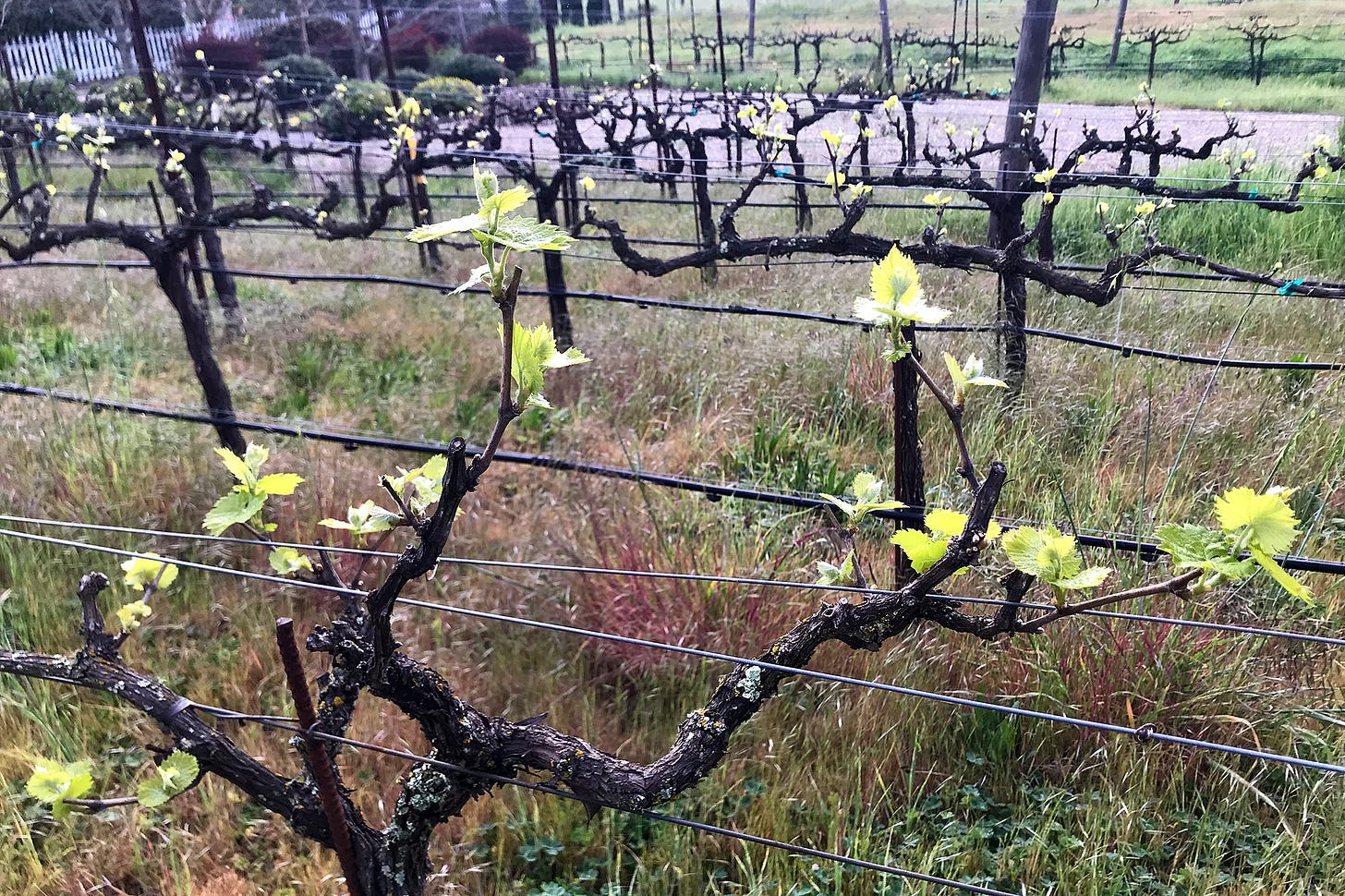Walk the talk
With buds bursting it's all about viticulture
It is no coincidence that, on all four sides, in all four corners, the borders of the Roman Empire stopped where wine could no longer be made. ~ Neel Burton
And suddenly it’s spring
Bud break. If you live in wine country you must acknowledge the beginning of every new vintage with the reveal of fresh growth on the dark skeletons of Vitis Vinifera, which have stood dormant for months. At first, it’s just the soft swelling and slight unfurling of buds—usually two—on the short, pencil-thick nipple of every spur. Grape growers call it “popcorn,” an apt description for the tiny green puffs strung along the dark outstretched arms of hundreds of thousands of seemingly lifeless vines, all tightly pruned in the Menorah-shape referred to by those same grape growers as a bilateral cordon.
Two or three days later that popcorn unfurls further—a costume change for the vineyards which now present as fields of cotton, sporting balls of fragile green leaves, or, to complete the earlier metaphor, as green flames atop each candle position. One more week and this new growth will confirm itself into genuine shoots, inches long and bearing the first tight flower clusters that will eventually become grapes.
That is what is happening now.

I just finished Viticulture, the fourth course I’ve completed towards earning my U.C. Davis Winemaking Certificate. I took it out of sequence (it’s usually the last course of the Certificate) because this year I’m solely responsible for farming three different tiny vineyards and I wanted to learn everything I could before the new season began. The course was intensive and extremely informative, but the testing and grading were hardly rigorous and I ended up earning a 98.24%—keeping my A streak alive for the overall Certificate. This is less impressive than it seemed at first, especially when I heard my Viticulture professor quip, “I’ve never had anyone earn less than a high B on the final exam.”
Why do you build me up Buttercup, baby just to let me down…
I only have two more courses to go, Quality Control & Analysis in Winemaking and Wine Stability & Sensory Analysis, the former beginning in just a week. But after reading the instructor’s letter of introduction, I fear the easy times might be over:
This course introduces the principal chemical and microbiological factors and analyses that influence quality wine production. Developed with specific winemaking stages in mind, the course combines theory with applied analytical methods so that students can understand how and when to apply specific analyses as part of an integrated program of winery quality control. Microbial control from grape harvest to bottling of wine is explored and emphasis is given to competency in the theory and evaluation of an array of analyses used in quality control. Successful completion of college level courses in chemistry and biology are critical to this class as these disciplines are at the core of the material presented.
Augh! Just the thought of all that thought curls my toes.


